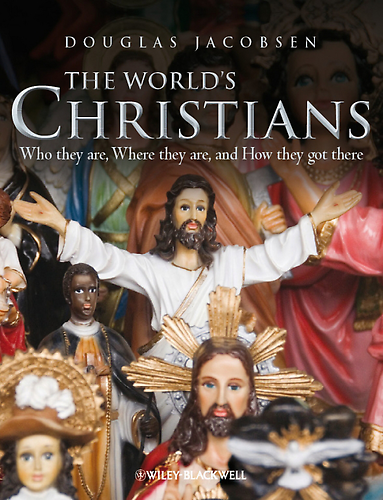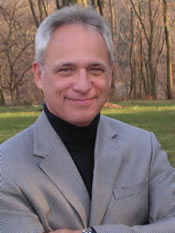Douglas Jacobsen has taught at Messiah College in Grantham, PA since 1984. Currently he serves as Distinguished Professor of Church History and Theology. Jacobsen is a member of the United Church of Christ and serves on the Theological Commission of the UCC Penn Central Conference. Jacobsen is the author of several books including Scholarship and Christian Faith: Enlarging the Conversation (with Rhonda Hustedt Jacobsen, 2004) and The World’s Christians: Who they are, Where they are, and How they got there (2011).
Book Basics
One third of the world’s population is Christian. The World’s Christians explores how this came to be by tracing the development of the faith over time with considerable attention to culture, theology and geography. While the volume itself is lengthy and comprehensive, it is an entry level text designed to be accessible to all readers. I highly recommend the text for church libraries, for individuals who want a richer understanding of the history of the faith, and as a resource guide for those teaching small groups or Sunday school classes (especially those studying Christian traditions other than their own).
The book is divided into three parts:
 Who They Are tells the story of the four traditions: Orthodox, Catholic, Protestant, and Pentecostal/Charismatic. Each of these brief chapters includes sections on the tradition’s spirituality, understanding of salvation, structure, and history. Jacobsen also offers a sense of the relative size of each group, relying on his own best guesses and explaining how he arrived at each.
Who They Are tells the story of the four traditions: Orthodox, Catholic, Protestant, and Pentecostal/Charismatic. Each of these brief chapters includes sections on the tradition’s spirituality, understanding of salvation, structure, and history. Jacobsen also offers a sense of the relative size of each group, relying on his own best guesses and explaining how he arrived at each.- Where They Are examines the history and contemporary status of Christianity in the world’s nine regions. These chapters are ordered to reflect the chronology of when Christianity arrived in each region, beginning with the earliest: the Middle East and North Africa; Eastern Europe; Central and South Asia; Western Europe; sub-Saharan Africa; East Asia; Latin America; North America; and Oceania.
- How They Got There explores what was happening during each of four time periods: (1) The Ancient Tradition: Beginnings to 500; (2) The Great Division and the Age of the East: 500 to 1000; (3) The Rise of the West and the Decline of the East: 1000 to 1500; and (4) Christianity in the Global Era: 1500 to the Present.
So What?
While almost all Protestants are aware of the shifts within the realm of those who are called Christian over the last 500 years, many lack a historical perspective of their significance. Additionally, most continue to put into a single group, called Protestant, all denominations and traditions that came into being since 1500. In keeping with the latest scholarship, Jacobsen rightly asserts that the Pentecostal/Charismatic tradition is unique and should not be placed into the category alongside all of the many Evangelical and Ecumenical groups that comprise Protestantism.
- How well do you know the history of your current tradition (Orthodox, Catholic, Protestant, or Pentecostal/Charismatic)? If you are a Protestant, how well do you know the history of your current denomination? What experiences have contributed to your understanding of each?
- Have you ever studied the history of your faith and/or sought to better understand one or more of the other traditions? If so, how has this enriched your perspective? If not, how might you choose to do so?
Douglas Jacobsen. The World’s Christians: Who they are, Where they are, and How they got there (Wiley-Blackwell, 2011). ISBN: 9781405188876
